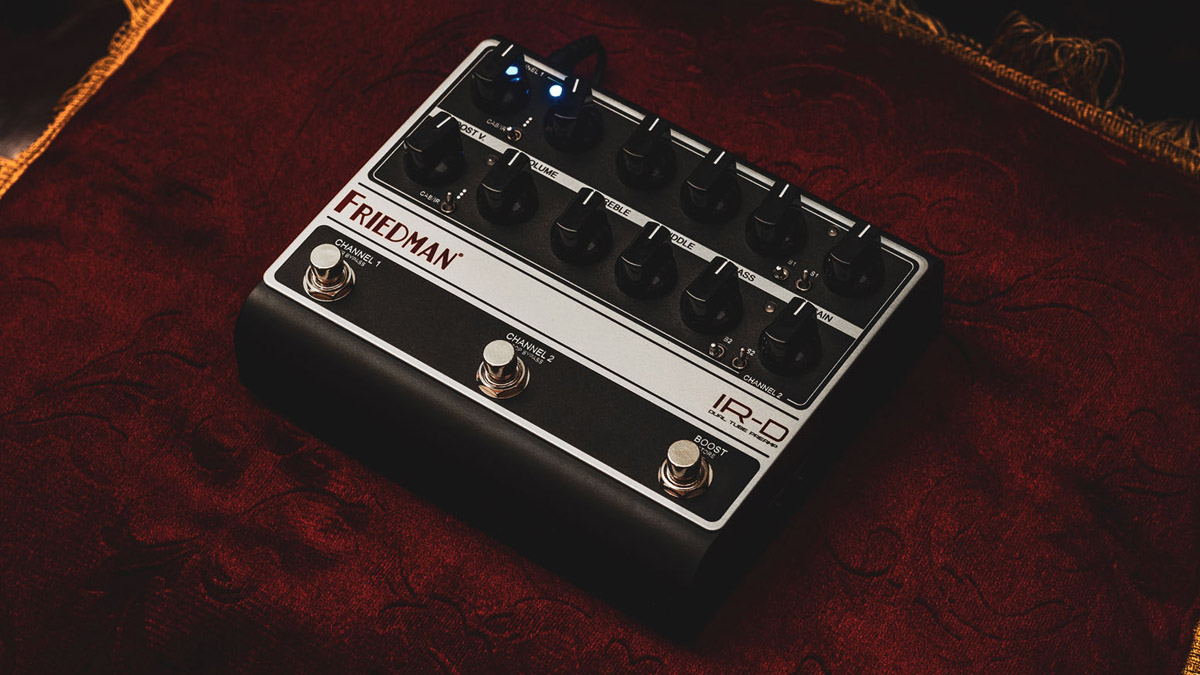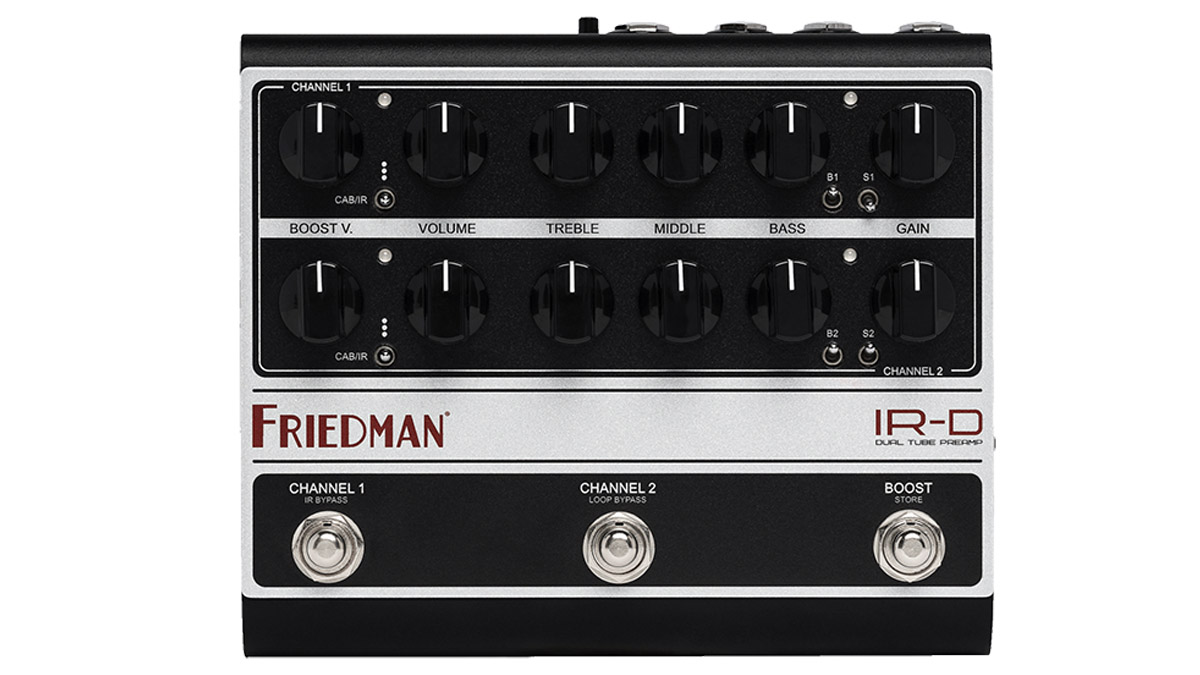“Two glowing hot 12AX7 preamp tubes, running at the proper high voltage, are this pedal’s beating heart”: Friedman unleashes the IR-D, a twin-channel boutique fire-breather inspired by a modded JTM45
The IR-D preamp pedal takes those Friedman's high-end amp sounds and puts them in a tube-driven pedal, with dual boosts, onboard IRs, MIDI control and effects loop

Friedman Amplification, the high-end guitar amp brand favoured by the likes of Jerry Cantrell and Bill Kelliher, has launched the IR-D, a preamp pedal that packs all the modded JTM45 tones of its Dirty Shirley and Twin Sister tube amps into a compact pedalboard-friendly format.
Some preamp pedals emulate a certain type of circuit, some are more like overdrive pedals with some extra features, but the IR-D promises more. Like the IR-X that was launched in September 2023, it described by Friedman “as a genuine preamp in every way”, and at the heart of its design lies a pair of 12ax7 tubes running at high voltage.
And those tubes are not there to “warm up” a digital or solid-state circuit; they are quite literally “glowing hot” to offer players “all the tone, response, gain characteristics, and harmonic complexity you expect from a Friedman design”.
Basically the idea is that you get the preamp section a bona-fide boutique tube amp on your pedalboard for a hair under $500, and that’s not to be sniffed at. You also get a reassuringly amp-like product, with plenty of features but few reasons to reach for a manual.
The IR-D presents players with two identical channels, both of which are footswitchable, and each with its own independent boost circuit, which, again, is footswitchable.
Betraying the sorts of sounds you are in for, the IR-D is dressed in a similar silver-panelled livery as the Twin Sister amp heads. Each channel has a three-band EQ plus dials for Volume and Gain, and a pair of switches to change the character of the preamp’s response. Each channel has a two-way bright switch and a three-way structure switch.
There are mini knobs on the side of the pedal for setting the gain level of the boost. When you factor in the boost, you could consider this a de factor four-channel preamp, running differently EQ’d clean sounds across each channel, and then stepping on the boost to effectively change channels and apply some heat and crunch.
Want all the hottest music and gear news, reviews, deals, features and more, direct to your inbox? Sign up here.

The user experience is all very old-school. The sounds you will get out of it will be too. Think vintage Marshall amps with a bit of custom hot-rodding from Dave Friedman – an amp guru who was entrusted to work on Eddie Van Halen’s guitar amps, no less.
But while these might have one foot in the 20th century – at least tone-wise – they also are very much creatures of the 21st-century, with Friedman shipping these with 13 onboard IRs, and a balanced line out for sending your signal direct to a DAW or desk.


Each channel has its own independent three-way CAB/IR switch, and you can load your own to the IR-D via the proprietary software. These onboard IRs can also be bypassed entirely so you can use the unit with a third-party IR loader.
There are even more options, with a transparent effects loop for easy pedalboard integration, and a MIDI connection so you can hook it up to a laptop or MIDI controller for enhanced switching options, and use MIDI for channel and boost selection, managing IRs, and turning the effects loop on and off.
Options are the name of the game. You can put time-based effects in the loop, run your drives and fuzz pedals into the front end of the IR-D, and then send the signal direct to the board for live performance or recording.
Each channel has its own Power and Thump power amp simulation, which can be edited via the software. There is also a 1/8” headphones output, and a USB connection.
The IR-D is available now, priced £/$499. See Friedman Amplification for more details.
Jonathan Horsley has been writing about guitars and guitar culture since 2005, playing them since 1990, and regularly contributes to MusicRadar, Total Guitar and Guitar World. He uses Jazz III nylon picks, 10s during the week, 9s at the weekend, and shamefully still struggles with rhythm figure one of Van Halen’s Panama.


